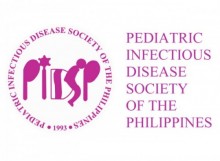Journal 2018 Vol.19 No.1
A Prospective Cross-Sectional Study on the Prevalence and Factors Associated with Seroprotection after Primary Series of Hepatitis B Vaccination
Adrienne Michelle B. Lu, M.D., Maria Estela R. Nolasco, M.D., Marilou G. Tan, M.D.
Abstract
Objectives: To determine the prevalence and factors associated with seroprotection among children 3 months to 18 years old with primary Hepatitis B vaccination series.
Methodology: This is a prospective cross-sectional study done among children 3 months to 18 years old with complete primary series of Hepatitis B vaccination. Demographic, social and clinical data were correlated with reactivity to antibody to Hepatitis B surface antigen (antiHBs) (>10 IU/L),total antibody to Hepatitis B core antigen (total anti-HBc) and Hepatitis B surface antigen (HBsAg) serologic tests.
Results: Among 110 subjects from different age groups,52% had seroprotective anti-HBs levels, with the highest noted among infants (3 months-2 years) at 82%, followed by 41% from the childhood group (3-9 years) and 26% from adolescent group (10-18 years). Seventy-four percent of subjects with <5 years interval from vaccination were seroprotected, 26% in subjects after 5-10 years, and 38% at more than 10 years after vaccination with significant difference on multi-logistic regression (p value 0.000/0.020). None of the other factors including gender, geographic area, age at first dose, vaccination schedule, type and place of vaccination were significantly associated with seroprotection.
Conclusion: Fifty-two percent of patients among different age groups were seroprotected. Seroprotection was significantly associated with the interval year after vaccination demonstrated at < 50% 5 years and beyond post-vaccination.
Keywords: Hepatitis B seroprotection, Hepatitis B immunization, anti-HBs
https://doi.org/10.56964/pidspj20181901002
| View Full Article in PDF format |
Journal 2018 Vol.19 No.1 Original Articles 1pidsp@uplink.com.ph2022-12-10T08:22:44+00:00
